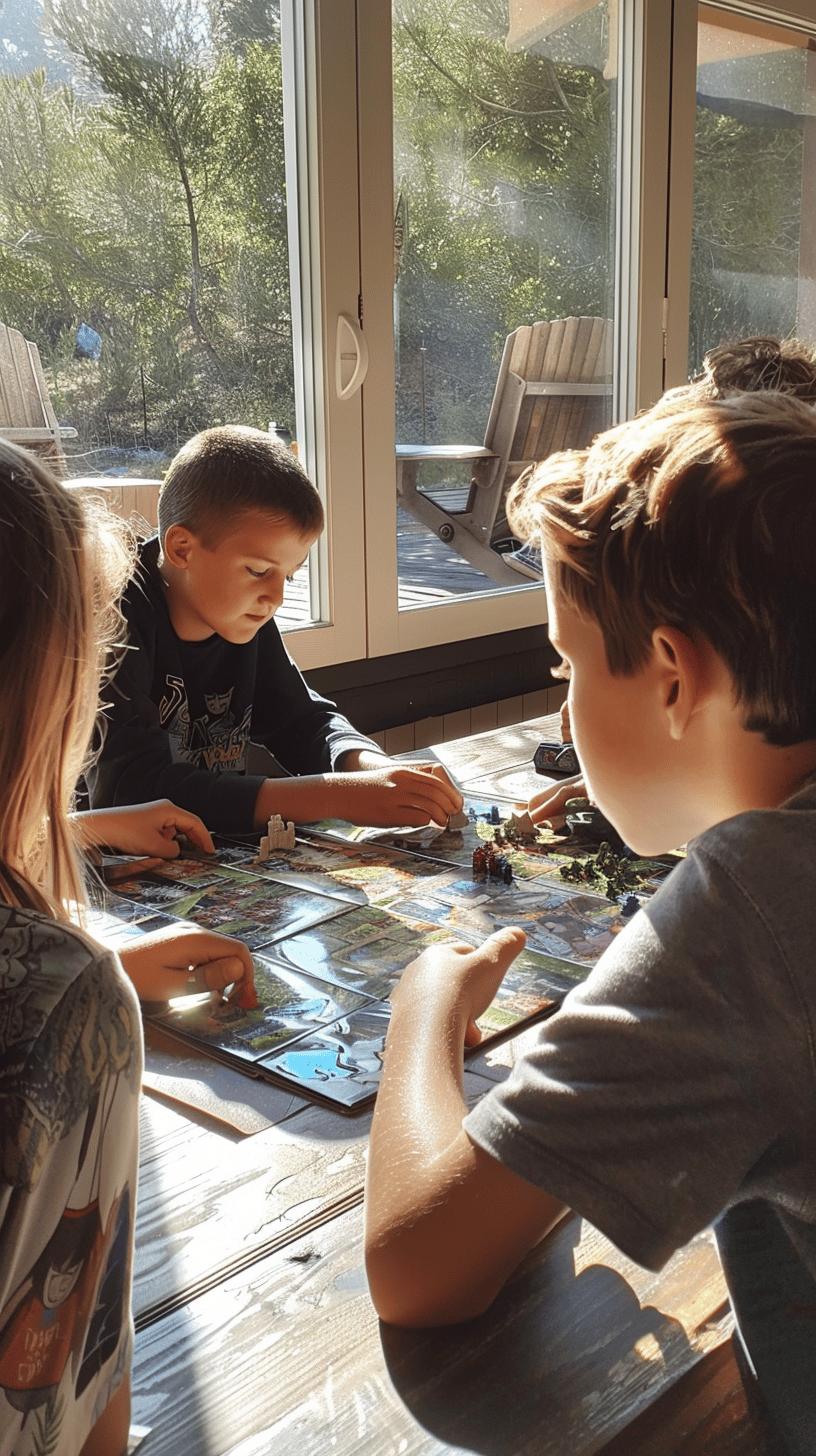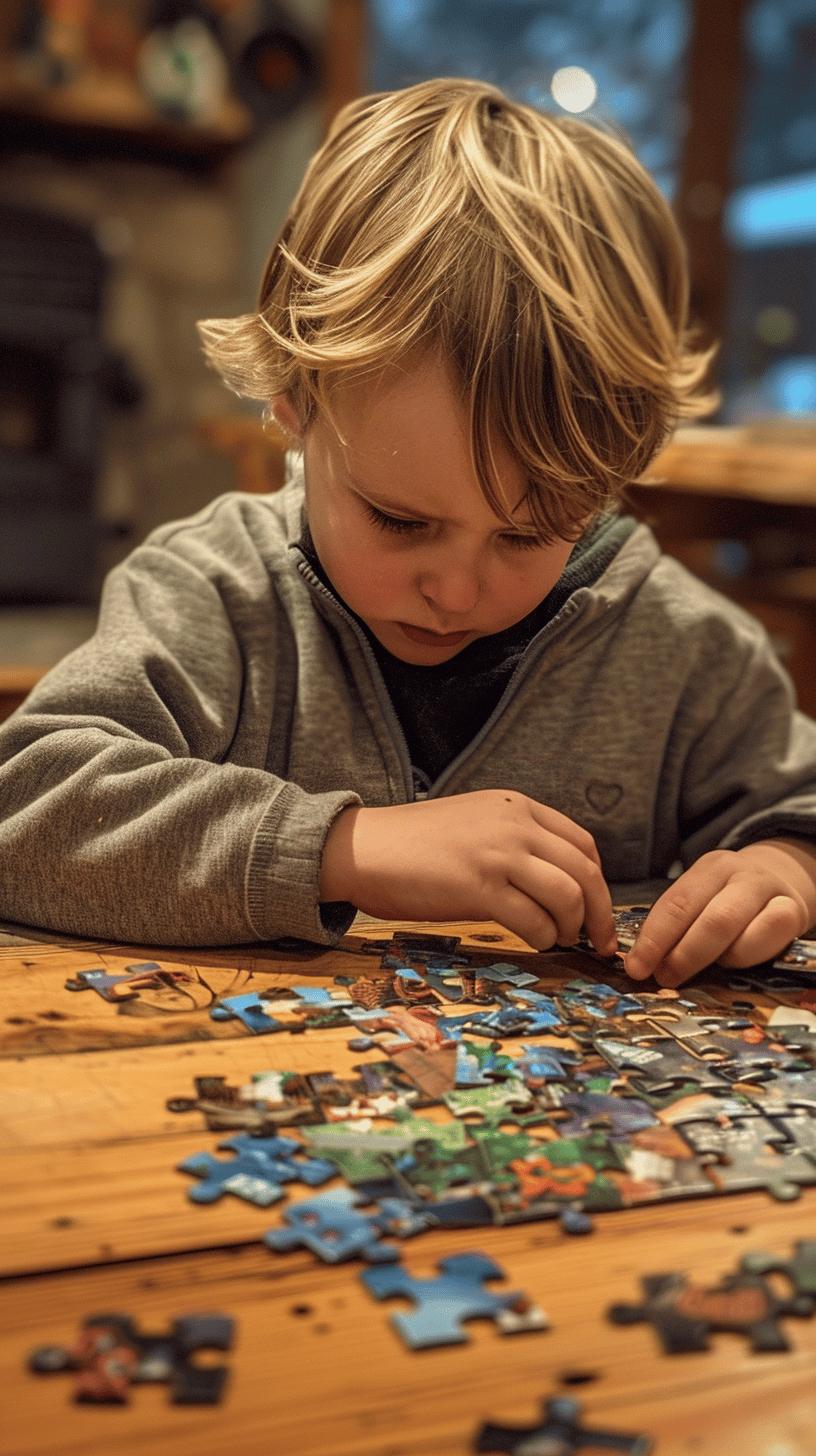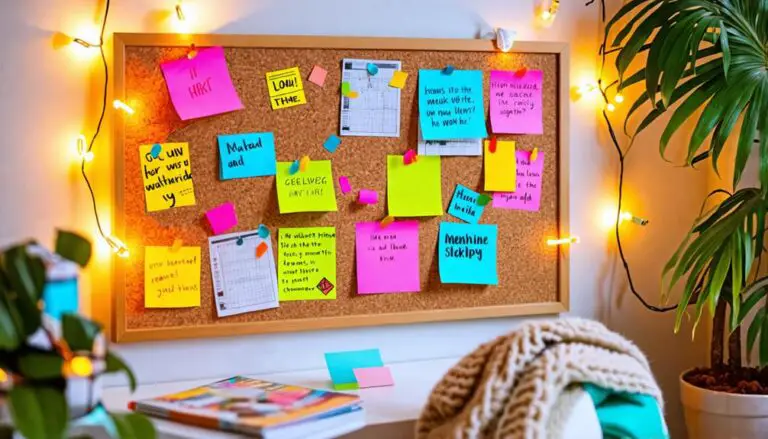5 Ways to Encourage Problem-Solving Skills in Kids
How many times have you watched your child struggle with a puzzle or a tricky homework problem and felt the urge to step in? It’s tempting to solve their problems for them, right?
But what if I told you that stepping back and letting them figure it out on their own is key to their growth?
In this article, we'll explore five ways to encourage problem-solving skills in kids, helping them build confidence and adaptability. Let's dive in and empower our children to take on life's challenges with a little less hand-holding.
The Fundamentals of Problem-Solving Skills in Kids
Problem-solving skills are essential for cognitive development, confidence building, adaptability, and decision-making abilities in children. When kids learn to solve problems, they become more capable of analyzing, evaluating, and synthesizing information. This not only boosts their intellectual growth but also helps them understand the world around them more effectively.
Building self-confidence through problem-solving experiences is another significant benefit. When children tackle challenges and find solutions, they see firsthand what they are capable of achieving. This boost in confidence is crucial for their personal development and helps them approach future problems with a positive mindset.
- Enhances cognitive development
- Builds self-confidence
- Promotes adaptability
- Strengthens decision-making abilities
- Encourages independence
Decision-making and adaptability are crucial skills that come from effective problem-solving. When children face various challenges, they need to make choices and adapt to different outcomes. These experiences teach them to be flexible and resilient, preparing them for the complexities of life. Encouraging problem-solving from a young age helps children feel more confident in their ability to make independent choices and adapt to new situations.
Age-Appropriate Problem-Solving Activities

Age-appropriate problem-solving activities are crucial because they align with your child's developmental stage, making the learning process both effective and enjoyable. Tailoring activities to suit different age groups ensures that kids stay engaged and motivated while building essential problem-solving skills.
Activities for Pre-Schoolers
- Building Forts: Encourages creativity and teamwork.
- Wooden Blocks: Enhances spatial awareness and fine motor skills.
- Sorting Games: Teaches categorization and critical thinking.
- Simple Puzzles: Develops patience and problem-solving abilities.
For pre-schoolers, hands-on learning and play are key. Building forts using pillows and blankets can stimulate their imagination and require them to think about structure and stability. Wooden blocks offer endless possibilities for construction, which can help with spatial awareness and motor skills. Sorting games, like separating different colored toys or shapes, teach them categorization, a fundamental aspect of problem-solving. Simple puzzles are also fantastic for developing patience and critical thinking, as kids must figure out how pieces fit together.Activities for Older Children
- Coding Apps: Builds logical thinking and problem-solving.
- Chess: Enhances strategic planning and foresight.
- DIY Projects: Encourages creativity and practical problem-solving.
- Board Games: Promotes teamwork and critical thinking.
For older children, more complex activities can be introduced to further develop their problem-solving skills. Coding apps such as Scratch or Tynker help build logical thinking and problem-solving abilities in a fun, interactive way. Chess is another excellent activity, as it requires strategic planning and foresight. DIY projects like building a birdhouse or creating a simple robot encourage creativity and practical problem-solving. Board games that require strategy and teamwork can also be beneficial, promoting critical thinking and collaborative problem-solving abilities.
By integrating these age-appropriate activities into your child's routine, you can create a stimulating environment that nurtures their problem-solving skills at every stage of their development.
Modeling Effective Problem-Solving
Modeling effective problem-solving is one of the best ways to teach kids how to tackle challenges. When children see us handle real-world problems, they learn valuable skills by observing and mimicking our actions. One way to model problem-solving is by thinking aloud during challenges. By verbalizing our thought process, we demonstrate how to approach the issue, consider options, and make decisions.
Another crucial aspect is emotion coaching. Before diving into problem-solving, it's vital to help young children manage their emotions. This step ensures that they are calm and focused, making it easier for them to think clearly and find solutions. By acknowledging their feelings and guiding them through emotional regulation, we set the stage for effective problem-solving.
- Think Aloud: Share your thought process during challenges to show real-world problem-solving.
- Emotion Coaching: Help kids manage emotions before tackling problems.
- Identify Difficulties: Encourage kids to pinpoint specific issues by saying, “Show me the hard part.”
- Allow Struggle: Let children learn from their struggles without providing immediate answers.
Allowing children to struggle and learn from their experiences is essential for developing problem-solving skills. When kids face challenges and work through them independently, they gain confidence and resilience. It's important not to jump in with immediate answers; instead, support them as they explore different solutions. This approach teaches them that struggling is a natural part of the problem-solving process and helps them build the perseverance needed to tackle future obstacles.
Engaging Problem-Solving Games and Activities

Problem-solving games and interactive challenges can significantly enhance children's cognitive skills. These activities stimulate logical reasoning, critical thinking, and creativity, helping kids develop essential life skills while having fun.
Games That Promote Logical Reasoning and Critical Thinking
- Puzzles: Jigsaw puzzles help kids recognize patterns and develop spatial reasoning.
- Riddles: Solving riddles stimulates critical thinking and lateral thinking skills.
- Sudoku: This number-based game enhances logical reasoning and concentration.
- Strategy Board Games: Games like "Settlers of Catan" or "Risk" require strategic planning and foresight.
Puzzles are excellent for developing spatial reasoning and recognizing patterns. They provide a hands-on way for kids to think critically about how pieces fit together. Riddles, on the other hand, challenge children to think laterally and find creative solutions, enhancing their critical thinking skills. Sudoku is another fantastic option, promoting logical reasoning and concentration through its number-based challenges. Strategy board games like "Settlers of Catan" or "Risk" require kids to plan ahead and make strategic decisions, further developing their logical thinking abilities.Activities That Encourage Teamwork and Collaboration
- Escape Room Challenges: These require teamwork and collective problem-solving.
- Group Science Projects: Collaborating on experiments fosters teamwork and critical thinking.
- Team Sports: Activities like soccer or basketball build social problem-solving skills and cooperation.
- Role-Playing Games: Games like "Dungeons & Dragons" promote creative problem-solving and teamwork.
Escape room challenges are fantastic for promoting teamwork and collective problem-solving. They require kids to communicate effectively and work together to solve puzzles and escape. Group science projects are another excellent way to foster teamwork and critical thinking, as kids must collaborate to conduct experiments and analyze results. Team sports such as soccer or basketball not only build physical skills but also enhance social problem-solving abilities and cooperation. Role-playing games like "Dungeons & Dragons" encourage creative problem-solving and teamwork, requiring players to work together to navigate through various scenarios.
By integrating these games and activities into your child's routine, you can create a stimulating environment that nurtures their problem-solving skills while ensuring they have a blast.
Creating a Problem-Solving Environment at Home
Creating a supportive environment at home is crucial for children to practice and develop their problem-solving skills. When the household culture embraces tackling challenges with a positive attitude, kids learn to see problems as opportunities rather than obstacles. Encouraging a mindset where problem-solving is a fun and integral part of daily life helps children feel confident and enthusiastic about finding solutions.
Involving children in family problem-solving activities is another effective way to foster these skills. When kids are included in discussions and brainstorming sessions, it shows respect for their abilities and encourages them to think creatively. This practice not only enhances their problem-solving skills but also boosts their self-esteem, making them more willing to tackle challenges independently.
- Cooking Together: Solve recipe-related problems and make adjustments.
- Garden Projects: Plan and solve issues related to plant care and garden layout.
- DIY Home Repairs: Work on fixing things around the house together.
- Family Game Night: Choose strategy-based games that require teamwork and problem-solving.
- Weekly Brainstorming Sessions: Discuss and solve real-life family issues together.
Parent involvement plays a significant role in creating a problem-solving environment. By participating in tasks and projects that require problem-solving, parents can guide their children through the decision-making process. Positive reinforcement is also vital. Praising children for their efforts and solutions, regardless of the outcome, encourages them to keep trying and learning. This supportive approach helps children build resilience and confidence, preparing them to face more significant challenges as they grow.
Teaching Problem-Solving Steps

A systematic approach to problem-solving is essential for helping children develop the skills they need to tackle challenges effectively. By providing a consistent process, children can learn to approach problems methodically, reducing feelings of overwhelm and increasing their confidence. Teaching them basic problem-solving steps lays a solid foundation for critical thinking and decision-making.
Implementing a simple, consistent problem-solving process with defined steps helps children understand how to analyze and address issues. When kids know what to expect, they can focus more on the content of the problem rather than the process itself. This approach also makes it easier for them to transfer these skills to various situations, from schoolwork to social interactions.
- Identify the Problem: Encourage kids to clearly articulate the issue they are facing.
- Brainstorm Solutions: Help them think of multiple ways to address the problem.
- Evaluate Options: Guide them in assessing the pros and cons of each solution.
- Implement the Solution: Support them as they put their chosen solution into action.
Breaking down problems into smaller, manageable parts is crucial for children to understand and solve complex issues. This method helps them focus on one aspect at a time, making the problem seem less daunting. Additionally, asking open-ended questions enhances critical and creative thinking skills. Questions like "What do you think will happen if…?" or "How else could we solve this?" encourage children to explore different possibilities and develop innovative solutions. This combination of a structured approach and creative thinking prepares them to handle future challenges more effectively.
Encouraging Creativity in Problem-Solving
Creativity is a vital ingredient in problem-solving, as it allows children to think outside the box and come up with innovative solutions. Encouraging creative play is one way to help kids navigate and solve problems. When children engage in imaginative activities, they practice thinking through various scenarios and figuring out how to overcome obstacles.
Storybooks are another excellent tool for teaching problem-solving. Characters in books often face challenges, and by discussing these narratives with your child, you can explore different approaches to problem-solving. This method not only makes learning fun but also helps children understand that there are multiple ways to tackle a problem.
- Creative Play: Activities like building with LEGO or making up stories encourage imaginative thinking.
- Storybook Discussions: Talk about the problems characters face and brainstorm possible solutions.
- DIY Projects: Work on projects like building a birdhouse or creating art, demonstrating problem-solving in action.
- Problem-Solving Prompts: Provide materials like cardboard, tape, and markers to inspire creative solutions to hypothetical problems.
Creative thinking skills are essential for effective problem-solving. When kids are encouraged to think creatively, they learn to approach problems from different angles and consider various potential solutions. This flexibility in thinking not only makes them better problem-solvers but also helps them adapt to new and unexpected situations. By fostering creativity, you equip your child with the skills needed to tackle challenges confidently and creatively throughout their lives.
Building Confidence through Problem-Solving

Building self-confidence in children can be achieved by providing experiences where they can demonstrate their capabilities. When kids tackle challenges and find solutions, they're able to see what they can achieve, which boosts their confidence. These positive experiences encourage them to approach new problems with a sense of assurance in their abilities.
Allowing children to experience failure is also crucial in developing problem-solving skills. Failure should not be seen as a setback but as a learning opportunity. When kids understand that failure is a natural part of the learning process, they become more resilient and willing to try again. This resilience is key to building confidence and improving problem-solving skills over time.
- Provide Opportunities for Success: Give children tasks that are challenging but achievable to help them build confidence.
- Encourage Risk-Taking: Let kids try new things, even if there's a chance of failure, to foster resilience.
- Use Positive Reinforcement: Praise efforts and solutions to make children feel valued and motivated.
- Promote Self-Reflection: Help kids reflect on their problem-solving experiences to learn and grow.
Resilience and self-reflection play significant roles in building confidence through problem-solving. Encouraging kids to reflect on their experiences helps them understand what worked, what didn't, and why. This reflection process not only enhances their problem-solving skills but also builds resilience by showing them that setbacks are part of learning. When children can look back and see their progress, it reinforces their belief in their abilities and motivates them to keep tackling new challenges.
Final Words
Teaching kids problem-solving skills has so many benefits.
From enhancing cognitive abilities to building self-confidence, it sets them up for success.
Different activities for different ages keep things engaging and effective.
By modeling problem-solving and creating a supportive home environment, we help build these essential skills.
Remember, finding fun ways to encourage problem-solving skills in kids not only aids their development but also strengthens family bonds.
Here's to raising confident, adaptable little problem-solvers together!
FAQ
What is problem-solving in early childhood?
Problem-solving in early childhood refers to teaching kids to identify, analyze, and solve challenges. This boosts cognitive skills, confidence, and adaptability.
Examples of problem-solving in child development?
Examples include puzzles, building blocks, and simple tasks like organizing toys. These activities help children think critically and develop solutions.
Ways to encourage problem-solving skills in kids at home?
Encourage kids by providing puzzles, role-playing activities, and family problem-solving discussions. Create a supportive environment where they can safely make mistakes and learn.
How to teach problem-solving skills to adults?
Teaching adults involves presenting real-life scenarios and encouraging brainstorming sessions. Focus on breaking down problems and exploring multiple solutions.
Elementary problem-solving examples?
Elementary examples include team projects, math word problems, and science experiments. These activities help enhance logical thinking and teamwork in children.







